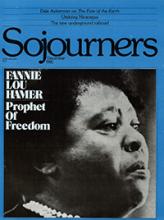In the late 1950s, something happened among black people in the South, something for which there is no simple explanation. Suddenly all the faith, courage, and endurance accumulated during 400 years of slavery and exploitation welled up into a massive nonviolent movement for human rights that, for a time, shook the country to its foundations.
The explosion was touched off by several circumstances. First, the long and tedious courtroom battles fought by the National Association for the Advancement of Colored People (NAACP) had begun to eat away at the legal basis for segregation and culminated finally in the 1954 Supreme Court school desegregation decision. Second, the struggles for self-determination of former colonies in Africa provided new pride and inspiration for many, especially younger blacks. Third, since 1947 small cadres of committed nonviolent activists had been experimenting with Gandhian tactics against segregation in the North and South. And, of course, the emergence of Dr. Martin Luther King Jr., as a leader who could move a broad cross section of the black community helped galvanize the movement. But even these factors fail to explain the depth and magnitude of what began to happen.
Recently I asked a long-time activist in Mississippi how she had become involved in the movement. She replied, "I don't really know how I or any of us got involved. I just know that in Shelby, Mississippi, when we heard that the Freedom Riders were coming, we walked around for days asking each other, 'Are they here yet?' We were like soldiers waiting for somebody's army to join us." This grassroots, almost spontaneous character of the freedom movement was significant and mystifying.
Read the Full Article

